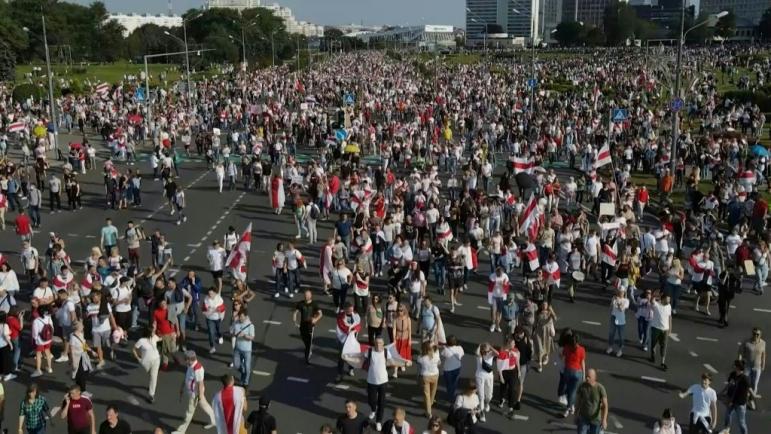
Well, we are now in the third week of protests in Belarus and they do not seem to be abating. They had over 100,000 protesting in Minsk yesterday, and there are regularly protests in other towns.
In a previous post, I had spelled out a number of possible outcomes.
The first was that Lukashenko manages to remain in power (implying by his own means and his own forces). I have no particular expertise or knowledge of Belarus or the situation, but these protests do seem 1) sizable, 2) widespread and 3) have continued for a while. Added to that, it seems like his police tried to crack down on them heavily at first, and that seemed to just increase the size and virulence of the protests. It appears that the police have backed off now, to some extent. He clearly has decided he will not/can not use more force, like using snipers on the crowds like Yanukovich did in Ukraine during the successful Euromaidan protests in 2013-2014.
I am leaning towards concluding that Lukashenko is not going to be able to just ride this one out as it. I am thinking that the first option I gave: which is that “Lukashenko manages to remain in power” is increasingly less likely. At this point I think the three most likely options are:
- Lukashenko is overthrown and replaced by a democratic government (I am always somewhat of an optimist).
- Russian intervenes
- To prop up Lukashenko, possibly in exchange for signing a treaty that surrenders some or much of their sovereignty (Putin has already publicly discussed sending forces to Belarus)
- Russian annexes Belarus.
- Lukashenko forms a combined government with the opposition so as to head off Russian intervention (Lukashenko is now discussing a referendum on constitutional reforms).
Watching this with great interest. This has the distinct possibility of becoming a map-changing event.
